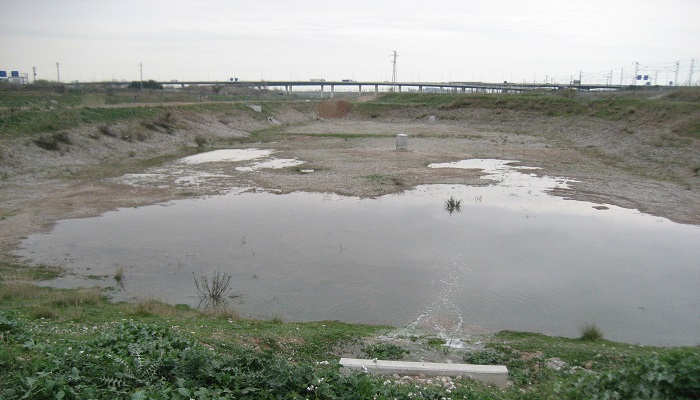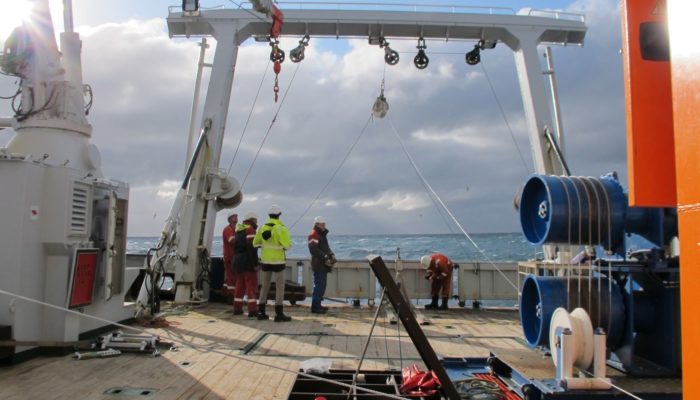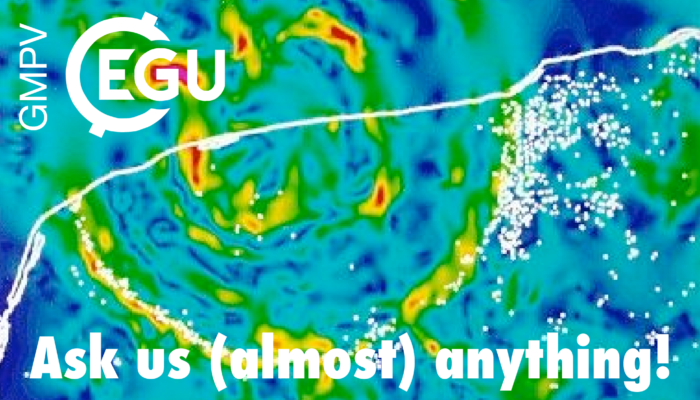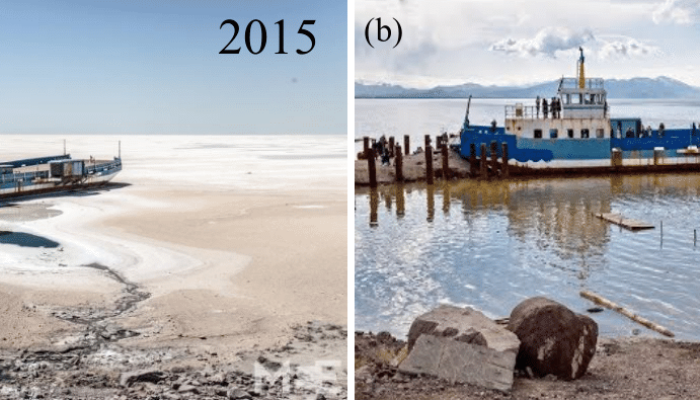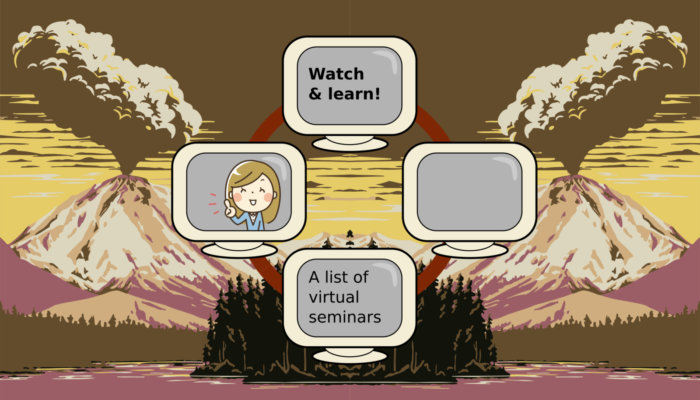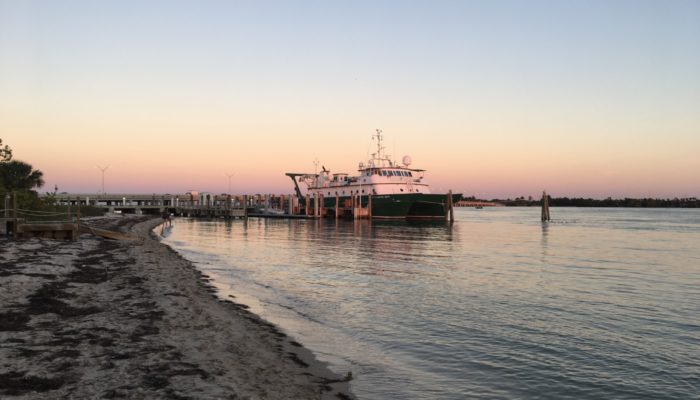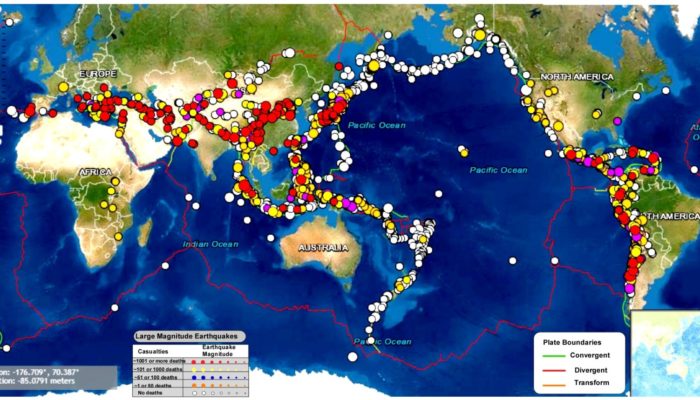The EGU 2020 Henry Darcy Medal of the EGU Division on Hydrological Sciences was awarded to Xavier Sánchez-Vila in recognition of his innovative theoretical work and practical solutions regarding aquifer characterisation, subsurface solute transport processes and managed aquifer recharge. Given the online EGU 2020 GA, the medal lecture was however postponed to 2021. We then invited Xavi to write so ...[Read More]
Ocean Sciences
Research Cruise in times of COVID-19
While the whole world is on stand-by we are in the middle of the North Atlantic and I want to explain you, why! During those crazy times cruise planning also slightly changes. The original plan was to depart and arrive back in Reykjavik which would have only included a short transit to our research area, the OSNAP East section. In the end we had a 9 day transit from our homeport Texel, Netherlands ...[Read More]
Geodynamics
The Sassy Scientist – The Burning Question
In the climb on the academic pyramid, Antonia wonders: How do you tell someone “you have not done enough to be included in the co-author list”? Dear Antonia, *arranges Yoda robe*: Big questions you have! Right place you came! I am sure you are not the first or the only scientist with that question. Since I feel generous today, I will leave here a template e-mail you can all copy and pa ...[Read More]
Tectonics and Structural Geology
Features From the Field: Pencil Cleavage
This edition of ‘Features from the field’ is brought to you by Sandra McLaren, a senior lecturer at the University of Melbourne. She will be talking about type of rock formation called “Pencil Cleavage” so called because it looks like pencils. Sandra even has a small collection of pencil/crayon shale which is the cover image of this post. I have seen quite a range of differ ...[Read More]
Geochemistry, Mineralogy, Petrology & Volcanology
Ask us (almost) anything: Were Chixculub and Deccan related?
Doc Rock from twitter asks Has anyone investigated the hypothesis that the Deccan Traps basalt flows came after, and were the result of, the Chixculub impact event, based on the DT basalts being on the exact opposite side of Earth at the time of the event? For context, the Chixculub crater is buried under the Yucatan peninsula in Mexico, and resulted from a meteorite impact that is widely believed ...[Read More]
Climate: Past, Present & Future
Breathing life into a d(r)ying lake in northwest Iran
Lake Urmia, in Northwest Iran, was once the most extensive and permanent hypersaline lake (salinity >> of ocean) in the world. Since 1995, the lake water level has dropped about 8 m, shrinking to less than 30% of its original surface area and losing more than 90% of its water volume over two decades [1]. Unsustainable water management in response to increasing demand together with climatic e ...[Read More]
Geodynamics
Watch and learn!
Too envious to watch Netflix’s Selling Sunset? Gone through the top 5 geodynamic movies? Lock-down vacation too boring for words? In need of useful procrastination? Search no longer! We have compiled an extensive list of online webinars and speaker series that were already active pre-Corona or saw the daylight during the pandemic to stay in touch with our colleagues both abroad and next door ...[Read More]
Ocean Sciences
Why do mesoscale eddies disappear at ocean western boundaries?
In the ocean, mesoscale eddies are everywhere. In fact, about 90% of the ocean’s kinetic energy is contained within these ubiquitous, ~100 km swirling vortices. We know how these eddies form, through a process known as baroclinic instability, where density surfaces are tilted too steeply and become unstable. What remains unclear however, is what happens to this energy when eddies die. This knowled ...[Read More]
Natural Hazards
Faults and earthquakes as friends and not foes
The earthquakes’ occurrence on the planet Earth is largely considered synonymous with disasters and people generally perceive geological faults as a threat to life and belongings. However, there are exceptions since a small community of earthquake researchers relate the occurrence of earthquakes with the lithospheric plate interactions where movement on faults causes earthquakes. Therefore, ...[Read More]
Geodynamics
The Sassy Scientist – Out Of Orientation
Ravi is done with his research, mentally. As he muses on a potential departure from academia – awaiting an unhackneyed sense of perspective – he asks: I want to leave academia! Where do I go? Dear Ravi, I am sorry to hear you’ve given thought to a termination of your academic career. After years of working in geodynamics, it sure shall be a great challenge to find new perspective ...[Read More]

